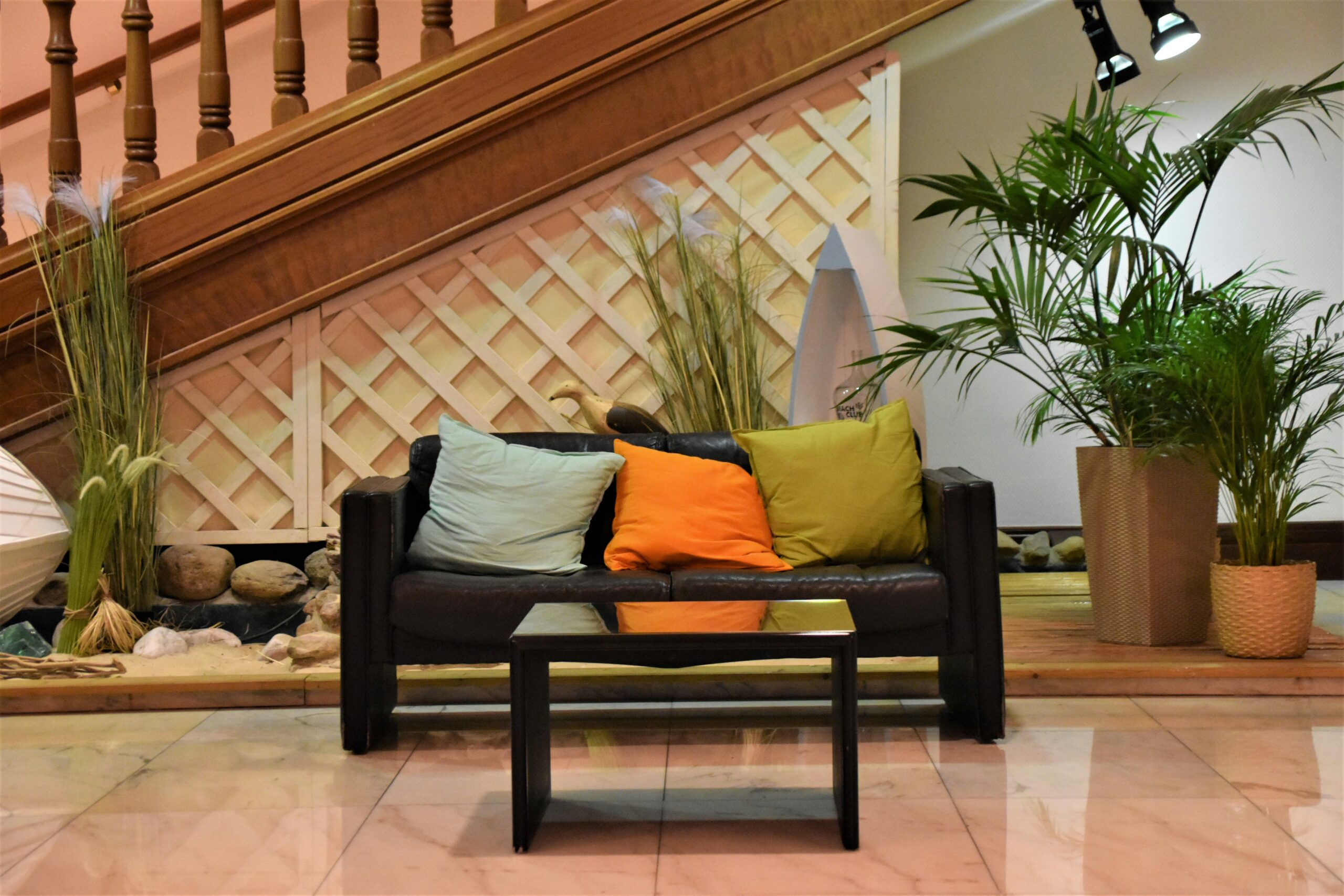Introduction:
Interior Design and Decoration is the professional and comprehensive practice of creating an interior environment that addresses, protects, and responds to human need(s).
The home is more than just a place to live; it’s an extension of your personality and a canvas for self-expression.

The world of interior design and decoration open up a realm of possibilities, allowing you to transform every nook and cranny into a haven of style, comfort, and functionality. In this extensive guide, we’ll explore the latest trends, timeless principles, and practical tips that will empower you to create a living space that is not only visually appealing but also a true reflection of your unique taste.
Start with a Vision:
To embark on your interior design and decoration journey, it’s essential to start with a clear vision. Envision the atmosphere you want each room to exude. Are you drawn to the warmth of a cozy, rustic cabin, or do you prefer the clean lines and simplicity of modern design? Your vision will serve as a guiding light, influencing every decision you make throughout the design process.
Consider the purpose of each space—whether it’s the relaxation of a living room, the functionality of a kitchen, or the tranquility of a bedroom. Tailor your vision to suit these specific needs, ensuring that your design choices align with both aesthetics and functionality.
Color Palette and Harmony:
Colors have a profound impact on our emotions and perceptions. When choosing a color palette, think beyond personal preferences and consider the psychological effects of different hues. Soft blues and greens can evoke a sense of calm, while bold reds and yellows can add energy and vibrancy.
Create a harmonious palette by selecting a base color and incorporating complementary shades. Neutral tones like whites, grays, and beige can provide an elegant and timeless backdrop, allowing other elements in the room to shine. Experiment with accent colors in furnishings, accessories, and decor to add depth and interest.
Interior Design and Decoration Furniture Selection:
Investing in quality furniture is an investment in the comfort and longevity of your living space. Beyond aesthetics, consider the functionality of each piece. Modular and multi functional furniture can maximize space, especially in smaller rooms.
Mixing and matching different textures and materials can add visual interest. For instance, pairing a plush velvet sofa with a wooden coffee table and metal accents can create a dynamic and eclectic look. Don’t shy away from experimenting with shapes and sizes, but ensure that the overall arrangement fosters a cohesive and inviting environment.
Statement Pieces and Focal Points:
Every well-designed room benefits from a statement piece or focal point that captures attention. Whether it’s a bold piece of artwork, an intricately designed rug, or a unique piece of furniture, these elements serve as the centerpiece around which the rest of the room revolves.
In Interior Design and Decoration, consider the architectural features of each room and accentuate them. A fireplace, an expansive window with a view, or a high ceiling can all become natural focal points. Integrate your statement pieces strategically to create a sense of balance and visual hierarchy within the space.
Lighting Design:
Lighting is a powerful tool in interior design and decoration , influencing both the aesthetic and functionality of a space. Natural light is ideal, but artificial lighting plays a crucial role, especially in the evening or in rooms with limited access to sunlight.
Diversify your lighting sources to create a layered and nuanced ambiance. Pendant lights, chandeliers, floor lamps, and table lamps each contribute to the overall illumination. Use mirrors strategically to reflect and amplify natural light, making rooms feel brighter and more spacious.
Accessorize Thoughtfully:
Accessories are the finishing touches that infuse personality into your space. From plants and throw pillows to decorative items on shelves, each accessory contributes to the overall aesthetic. Choose items that align with your chosen theme, colors, and textures.
Plants, in particular, bring a touch of nature indoors, creating a refreshing and lively atmosphere. Experiment with different textures in your accessories to add depth—soft fabrics, metallic finishes, and natural materials all contribute to a well-rounded and visually interesting room.
Functionality and Organization:
While aesthetics are crucial, functionality should never be compromised. Smart storage solutions are essential for maintaining a clutter-free environment. Opt for furniture pieces that serve dual purposes, such as storage ottomans or coffee tables with built-in compartments.
Consider the flow of movement within each room. Ensure that furniture placement allows for easy navigation, and pay attention to the practical aspects of daily living. An organized space not only looks better but also contributes to a sense of calm and order.
Conclusion – Stay Updated on Trends:
Interior design and decoration goes beyond aesthetics; it’s a strategic investment in creating a workspace that enhances productivity, creativity, and overall well-being. By combining functional design principles with personal touches and organizational solutions, you can transform your office into a haven where you not only work efficiently but also thrive in a positive and inspiring environment. Take the time to assess your needs, experiment with different design elements, and tailor your office decor to create
Interior design and decoration is a dynamic field that evolves with time. While timeless styles endure, staying informed about current trends can inspire fresh ideas for your space. Follow design blogs, magazines, and social media platforms to discover the latest innovations, popular styles, and emerging color palettes.
Trends can be integrated subtly, whether through accent pieces, color choices, or accessories. However, it’s crucial to balance trendy elements with timeless design principles to ensure your space remains relevant and aesthetically pleasing for years to come.Crafting a well-designed living space is an art that requires a blend of creativity, practicality, and a deep understanding of personal preferences. As you embark on your interior design journey, let your imagination soar, and let your home become a testament to your unique style.
